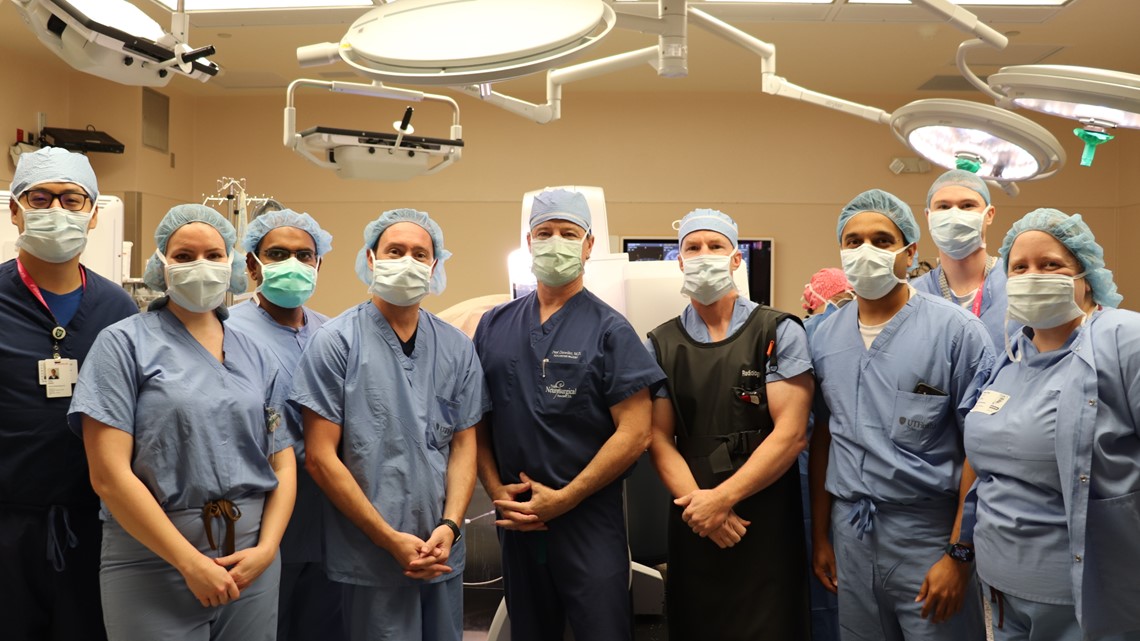TYLER, Texas — As neurosurgeon Paul Detwiler, MD, stood behind the patient, having just inserted an electrode in his brain, neurologist George Plotkin, PhD, MD, prompted the patient he was going to hand him a cup of coffee to hold.
The patient who has suffered from essential tremors so intense he hadn’t been able to sign his name in years.


“He said, ‘I wouldn’t do that, I can’t hold a mug of coffee,’ but Plotkin handed it to him and there was no movement at all. I’m watching the patient and he can’t believe it,” Dr. Detwiler said.
The patient’s response was the result of a deep brain stimulation delivered through an electrode Detwiler had placed into his brain. The exact location was confirmed with the help of Brainlab’s Loop-X, a fully robotic intraoperative imaging device.
According to Brainlab, UT Health Tyler is the first hospital in the United States to use the Loop-X technology on a deep brain stimulation case, and the first hospital in the world to use Loop-X on a patient who was fully awake during the surgical procedure.
The company also mentioned that UT Health Tyler is also the first U.S. hospital to perform an active spine case with Brainlab’s complete robotic suite.
The advanced Brainlab surgical workflow includes high resolution robotic imaging with Loop-X mobile imaging robot, data processing and precise guidance with Curve Navigation, and automatic, stable surgical support with the Robotic Alignment Module for the Cirq Arm System.
What's unique about the technology is that it can be used on its own. If all the components become synchronized they can offer a steady, unified and uninterrupted support during surgical procedures.
“Patients don’t have to travel to Houston or Dallas because we’re able to provide cutting-edge technology and first-class care right here in East Texas,” said Donald Baker, regional president of UT Health East Texas.
Taylor Moss, marketing manager with Brainlab, said the Loop-X technology allows surgeons to perform intricate cases with accurate outcomes.
Previously, if a patient was undergoing spine surgery, the surgeon would place the screws and the patient was taken for a CT scan the following day to ensure the screws were in the right position.
Now, with Loop-X, the surgeon can get confirmation in the operating room and make adjustments immediately rather than having to take the patient back into surgery the following day.
“There are huge advantages to Loop-X. “You’ve got that real-time navigation while you’re doing the surgery and putting the hardware in,” Detwiler said, “and then at the end, whether it be electrodes or screws, you’re able to come in and immediately do a scan and know everything is where you want it to be.”

